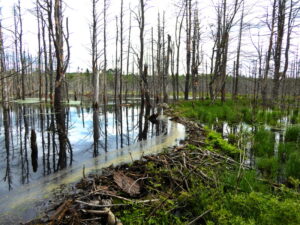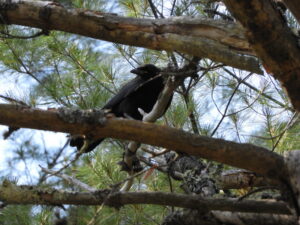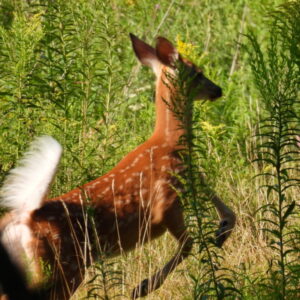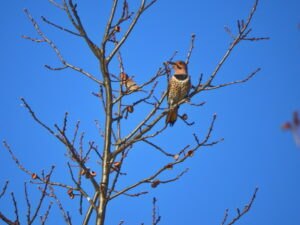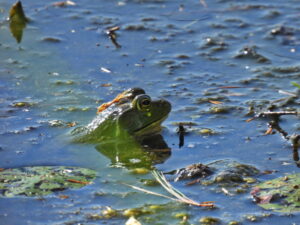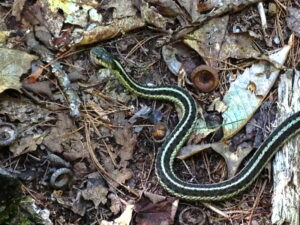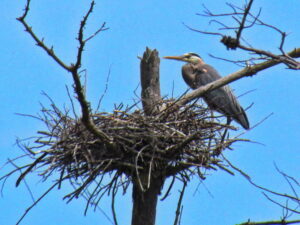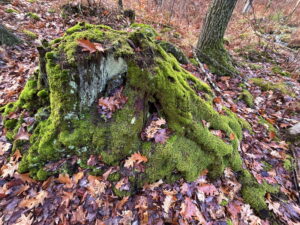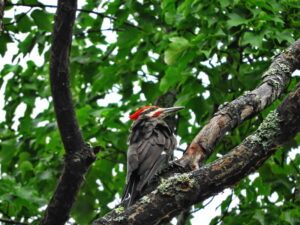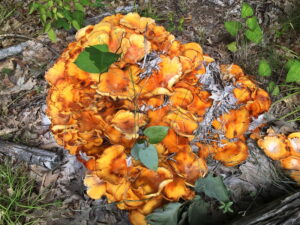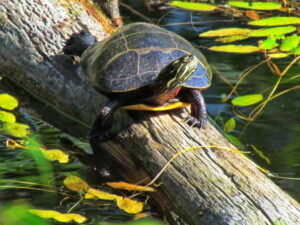
Ecosystem Diversity
Libby Hill Forest is home to an extensive variety of plant and animal life. With its location near local schools, it provides a unique opportunity to educate students and adults on Maine’s natural environment.
Wildlife and fauna are observable in all four seasons on the trails. What you will see on your outing will be determined by the season, time of day, and ecosystem you are exploring. You will find our bird hotspot guide an asset if you are looking for birds or you may find the ‘Nature Scavenger Hunt’ sheet to be a great activity to do with your kids. We also offer guided nature walks to individuals and groups who want to learn how to navigate and observe nature at Libby Hill (donations to Libby Hill are appreciated). Contact us if you would like a guide for your group.
Ecosystems at Libby Hill
Upland Pine-Oak-Hemlock Forest: Most of the Libby Hill Forest consists of Pine-Oak Forest. At the top of Libby Hill, a 73-acre parcel was selectively cut to favor the growth of white pine. Many of these trees are now 100-125 years old and give a cathedral of pines effect as you walk through trails such as Deer Run which are at the highest elevation of the trails (approx. 500 feet). Near the top of the hill, you will find the cellar hole of the old James Libby Homestead. If you look carefully, you will find a few old lilac bushes that were planted near the house in the mid 1800s. The pines have grown to remove the remains of any old orchards or other trees that were shaded out by the taller pines. Near the top of the hill, you will see a large swath of forest that has a few large trees. It is a space that runs about 500 feet by 100 feet. This area was impacted by a micro-burst (mini tornado) storm in 2005 that snapped the tops of many pines in this area opening the mature canopy. Now many young pine seedlings are competing to create the next succession forest. If you look carefully in this area in midsummer, you may find turkey chicks. Gray and sometimes red squirrels are likely to chatter at you as you go through these pine woods.

Red oak trees, some with barbed wire embedded in them, dominate the sloping forests east of the Lynx trail. This area was held by a different landowner and favored trees for firewood. This forest now has an impressive open understory of oaks and pine, where you often can see deer running in the distance. You will find many gray squirrels in this area along with chipmunks.
Hemlock trees are common in the drainage areas down slope and especially off the Harold Libbey trail. Many of these trees are over two feet in diameter and several hundred years old. Deer frequently bed down under them in winter and you can see their impressions in the snow the next day. You will also notice little snow collects under these trees in winter.
Open Fields
There are twenty-five acres of open ball fields around the schools. This area has historically always been pastured and it attracts many species of birds that like open space adjacent to woodlands. Here also are invasive plants that have come from the nearby landfill including Japanese Barberry, bamboo, and numerous field weeds. The entrance to the trails (Lynx trail) goes through a succession forest that is less than 50 years old. Here you can see how the fields revert to forest. In moist areas there are several dozen witch hazels which have yellow blooms in the off season.
Wetlands
There is a kidney-shaped pond near the middle school that historically was the site of a small sawmill. Using the Turkey Trot trail, you can follow side trails to observation points on the edge of the pond. Here you may see beavers or a wide variety of warblers or waterfowl. In winter when the ice is solid you can explore many of the dead snag trees that died from beaver activity that has increased the size of the pond. This pond has a large diversity of bird life with over 136 species of birds identified on eBird.
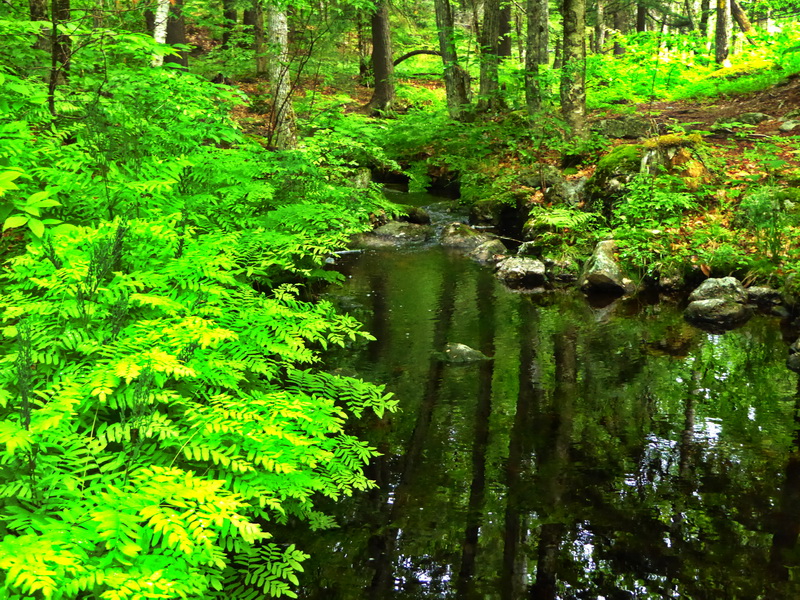
A second major wetland area is the Thayer Brook watershed which drains the back side of Libby Hill. You can explore this area from the Harold Libbey or Outback trails. Beavers have been moving up and down the brook over time creating a series of meadows and dead snag trees that are ideal nesting sites for many birds, including large birds of prey.
Glacial Moraine
A moraine rises 75 feet above Thayer Brook and can be explored via the Harold Libbey Trail. If you explore off trail, you can find large deposits of stone that create small caves where porcupines often live. Look for small piles of pellets on the edge of an opening to a stone crevasse and you have found a porcupine burrow. You will also find many erratics including ‘Whale Rock’ here which is fun to explore and find signs of erosion.
Wildflowers
Over fifty species of wildflowers exist on Libby Hill. They begin blooming in April until October with the peak bloom in late May to mid-June. We have a checklist guide you can use to find thirty of the more common flowers.
Animals
Deer, squirrels, chipmunks, raccoons, and porcupines are the most common mammals you will see on Libby Hill. Moose occasionally come through the trails, especially the Outback Trail. Bears are rarely seen but occasionally scat has been seen off the Outback trail. Coyotes do frequent this area but are wary of humans, but you may see their tracks in fresh snow.
Numerous frogs can be found in the pond and vernal pools in spring. Salamanders are also found in the wetland areas. Garter snakes are commonly seen sunning themselves near the trails.
Birds
The beaver marsh on Thayer Brook hosts several species of water birds. We also have extensive information on the best bird watching sites at Libby Hill.
